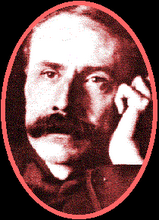 Not an inspired title for a blog post but at the turn of this new year I just wanted to share my delight at another ‘new year’ or at least the social construct that has been created around the new year.
Not an inspired title for a blog post but at the turn of this new year I just wanted to share my delight at another ‘new year’ or at least the social construct that has been created around the new year.One can’t deny that we as a species tend to like to bring some sense of order to universe around us. An ability to accurately measure time is of course invaluable and it can be argued one of the pillars supporting human technological achievement.
The ancient Egyptian astronomers found that the rising of Sirius heralded the annual Nile flood and was therefore of immense practical importance in guiding agricultural planning.
And we have developed so many other calendars and year types to measure time and events. The obvious is the Julian year, the Tropical Year and Anomalistic Years. All of which in their own way measure a revolution of the Earth around the Sun and (you may not be surprised to find) come out at about 365 and a bit days.
And then there are the ‘years’ which deal with the big stuff.
For example the Great Year (or Platonic Year) which corresponds to a complete revolution of the equinoxes around the ecliptic. Its length is about 25,700 years.
Or even better the Galactic Year which is the period it takes for our Solar System to revolve once around the galactic centre and is about 226 million years in duration.
None of which, however, require;
The attendance of a party or get together.
All counting backwards from ten in a co-ordinated manner in anticipation of the appointed hour, (you learn this at six and whilst practice does indeed make perfect I think by the age of eight one should be able to stop);
Morbid drunken introspection over the period just elapsing and the pretence that the ensuing revolution of the planet around its sun will for some bizarre reason be better than the last;
The group singing of that ghastly Burnsian dirge;
A list of resolutions to be maintained during the next cycle (although rarely in practice adhered to).
“Hum it’s the new Galactic Year better cut down to 10 cigarettes and 5 units of alcohol a day for the next 226 million years, or at least by the end of it”.
Apparently according to several sources I’m a bit miserable about this though. So the next time your vehicle competes a revolution around something (say your Vauxhall Corsa around the M25) let’s have a party.
Or better let’s have a party because we want to. Not because we feel we are obliged to.
Perhaps if I get the chance tonight I will spend some time looking at the stars, picking out the ‘movement’ of the constellations across the sky. There’s more to consider there than whether the party poppers worked, the beer was sufficiently chilled, whether ‘Gary’ can pluck up the courage to get a new job / wife / dog / hangover and perhaps I may be able to find an excuse not to give a damn about auld acquaintances (many of whom have been justifiably forgot).
Happy new revolution!














6 comments:
It has been noted that if the time elapsing between the end of the Permian and the end of the Cretaceous, is 226 Million years.
In both cases, we see mass extinctions, the second at least, known to have been caused by a meteoric event.
Furthermore there is good reason to beleive that a similar period of mass extinction occurred exactly 226 million years before the end of the Permian, at the start of the Cambrian, leading to the extinction of the soft bodied Edicaran fauna, and leading to the dominance of the triploblast forms.
In other words, we pass through a debris belt in the cycle.
Still, 161 Million years till it happens again.
Happy New Year, Grendel
Happy New Year Grendel, you curmudgeon. Although I did enjoy reading this and adding to my knowledge base.
Miserable sod, yet informative!Happy new year! ;)
Yep - Happy New Year!
Miserable New Year to you too. I am a New Years curmudgeon too. I never make plans, go to bed early and never never plan life changing resolutions that I know that I won't keep.
All the best for the next revolution.
Post a Comment